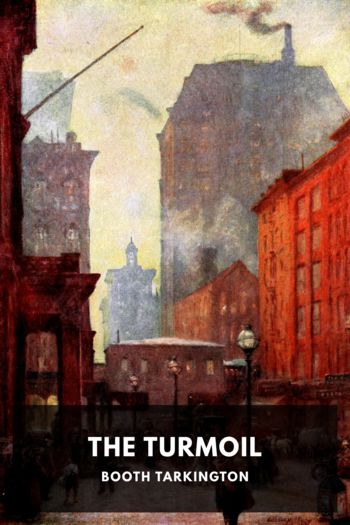Malaysian Maverick: Mahathir Mohamad in Turbulent Times Barry Wain (grave mercy .TXT) 📖

- Author: Barry Wain
Book online «Malaysian Maverick: Mahathir Mohamad in Turbulent Times Barry Wain (grave mercy .TXT) 📖». Author Barry Wain
Jaffar Hussein, the Bank Negara governor, took the rap and quit, along with Nor Mohamed Yakcop, the third in command at the bank and the official in charge of foreign-exchange operations. "I take full responsibility," Jaffar told the press. "In the absence of perfect hindsight, mistakes will be made; indeed, mistakes were made." He listed "errors of judgment" in anticipating global currency gyrations and in not installing trading safeguards to limit the central bank's losses.[108]
Nagging questions remained, however. With his commitment to "profit optimization and market expertise" in managing the country's reserves,[109] Jaffar undoubtedly allowed the bank to speculate. But it was out of character for him, an accountant by training, to have permitted the undisciplined trading to persist on such a scale for so long. In nine years while he was governor, Bank Negara proved itself a strong and vigilant regulator of other financial institutions, while failing to keep its own currency traders in check.
Both Daim Zainuddin, who was finance minister from 1984 to 1991, and Anwar Ibrahim, who replaced him until 1998, said they did not know Bank Negara, which the finance ministry supervised, was speculating. This is especially puzzling in the case of Daim, a confidant of Dr. Mahathir, who not only knew about the speculation but tacitly approved it. Daim said that when he learned what was going on in 1989, he called Jaffar Hussein and cautioned him, but "he said 'not to worry; we've got everything under control'. I said OK".[110]
Years after he had been dismissed and jailed by the prime minister, Anwar said Dr. Mahathir and Daim were responsible for the currency speculation with Nor Mohamed, behind the late Jaffar Hussein's back.[111] Anwar said it was only after he took over as finance minister and travelled abroad that a Swiss friend had told him Bank Negara was one of the top three speculators and considered a rogue bank. He said he was incredulous and sought clarification from Jaffar, who was similarly in the dark. Attempts to sort it out with Dr. Mahathir had gotten nowhere, Anwar said: The prime minister played down the problem and accused the Western media of trying to undermine Malaysia.
The mystery only deepened with time. In 1998, Dr. Mahathir appointed Nor Mohamed Yakcop, who had undertaken the gambling spree and departed for the private sector four years earlier in disgrace, to the post of economic adviser to the government. When Abdullah Badawi took over as prime minister in 2003, he promoted Nor Mohamed to second finance minister.
The Perwaja perils
In one of those moments that return to haunt politicians, Dr. Mahathir visited steelmaker Perwaja Trengganu Sdn. Bhd. in 1991 and declared, "Perwaja is one of the most successful government-owned companies in the country, and it has made all of us proud." [112] He was not merely premature, but ignominiously incorrect. Perwaja was Malaysia's biggest industrial basket case then, and it went downhill afterwards.
As a showcase element in Dr. Mahathir's state-led industrialization drive in the 1980s, Perwaja looked like no more than a shining example of a politically conceived, commercially questionable and poorly executed enterprise that predictably failed. Despite lavish funding, a robust economy much of the time and protection from competing imports in the form of both tariffs and quotas, the company was never able to produce steel profitably. It suffered from chronic operating problems and a crushing debt load, including stiff foreign-exchange losses on heavy borrowing abroad. Even after the government decided to swallow RM9.9 billion in accumulated losses and privatize Perwaja in 1996, it continued to flounder.
Yet there was a more sinister side to Perwaja that guaranteed it an exalted place in the pantheon of Malaysian financial scandals. An unknown portion of the RM15 billion or more that the company consumed was ripped off in various rackets and ruses. Although both internal and external reports confirmed that the company was bled white, almost nothing was done to bring the culprits to justice and recover the funds. Eric Chia, a former chief executive officer, was arrested only after Dr. Mahathir left the prime minister's office, and he was eventually found not guilty of criminal breach of trust involving the relatively paltry sum of RM76.4 million.
The integrated steel complex in Trengganu state was meant to supply domestic needs using energy from offshore gas fields to fire the rapid development of a heavy industrial base. Built first was a RM1 billion plant to smelt imported iron ore into hot briquetted iron, also known as sponge-iron, which then would be converted into billets, the material used for manufacturing a variety of steel products. The project was undertaken in 1982 by a joint venture between state-owned Heavy Industries Corporation of Malaysia, which took 70 per cent of the equity, and a big-name Japanese group led by Nippon Steel Corporation, which held the rest. Significantly, the Japanese government and consortium members financed most of the cost with concessional yen credits.
As the yen appreciated dramatically after the Plaza Accord was signed in 1985 and interest payments mounted, Perwaja encountered production problems and racked up large debts. In 1987, the direct-reduction plant that was supposed to produce sponge-iron but never functioned properly, was closed. Frustrated by the setbacks, Dr. Mahathir stripped the Heavy Industries Corporation of its stake in Perwaja and handed it to the Ministry of Finance. Nippon Steel and its partners eventually relinquished their shareholding, leaving the company in the hands of Malaysian federal and Trengganu state government agencies. Dr. Mahathir said





Comments (0)